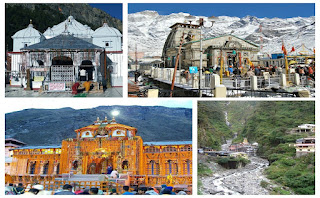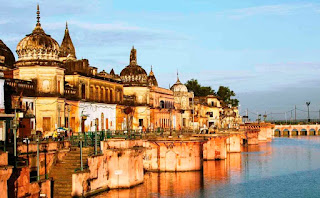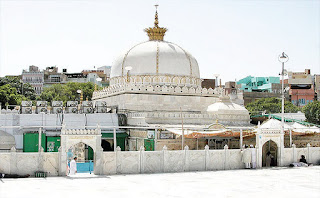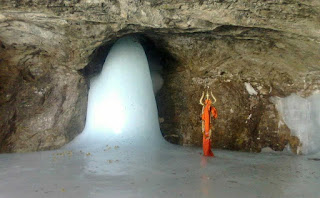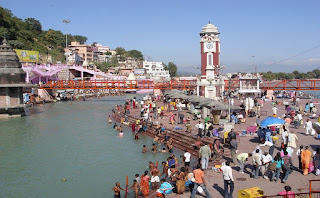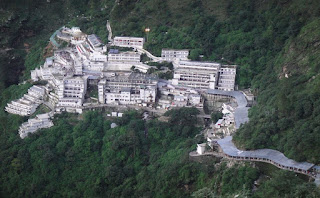Religion makes the focal point
of existence for all Indians. Thus, religious places abound in the country. The
northern part of India especially is home to several small and big shrines.
North India saw the rise of Islam and Hinduism simultaneously which is why
there’s no dearth of temples as well as mosques in the northern part of India. Northern
India’s rich history and age-old traditions coupled with lofty spiritualism,
makes it a haven for all religiously inclined Indians. If you are in a mind to
explore North India, you must visit the religious sites listed below. Without
visiting these sites, your exploration will remain incomplete. Read on to learn
more:
The Chardhams namely,
Yamunotri, Gangotri, Kedarnath and Badrinath spread across the Garhwal
Himalayas of Uttarakhand and are dedicated to Goddess Yamuna, Goddess Ganga,
Lord Shiva or Kedar and Lord Vishnu or Badrinath respectively. Adi Guru
Shankaracharya, the great Hindu religious guru had established the concept of
Chardhams centuries back. Today devout pilgrims from every nook and corner of
the country make a beeline to the Chardhams to attain ‘Moksha’ or salvation.
The journey to the Chardhams is rigorous journey and you have to trek for miles
on a challenging, mountainous terrain. Those who find it difficult to trek
their way up to Uttarakhand Chardhams, can avail the Chardham helicopter yatra services for a more convenient, comfortable and
speedy journey.
The holy city of Ayodhya in
Uttar Pradesh is believed to be the place where Lord Rama; Lord Vishnu’s 7th
Avatar took his birth. Lord Rama is said to have spent a major part of his
childhood at this place. Ram bhakts from every part of the country and globe
visit the place to pay their tribute to Lord Rama. The chief attractions of
this place are Ram Janmabhoomi temple, Kanak Bhavan temple, Kala Ram temple,
Lakshman ghat. Visiting Ayodhya allows pilgrims to pick an overtly religious
experience.
This is a much revered Dargah
for the Muslims. Muslim pilgrims from every nook and corner of the country and
world visit the Dargah. It is a common belief among pilgrims that if one prays
sincerely at the Dargah, the wishes of the person are bound to get granted.
This is a Sufi shrine dedicated to khwaja Moinuddin Chishti, the great Sufi
saint known enough for his secular preaching. Visiting this Dargah is often
considered equal to going for a pilgrimage to Mecca. Moinuddin Chishti is often
believed to be Prophet Mohammad’s chosen one. He was instructed in dream by the
prophet to go to India and spread Islam.
Amarnath is a cave shrine in
the north Indian state of Jammu and Kashmir dedicated to Lord Shiva also known
as Amarnath ji. Lord Shiva is enshrined here in the form of an ice stalagmite
lingam. According to myths, Lord Shiva had narrated the secret of eternity or
Amar katha to his consort Parvati at this very place.
Golden temple, also known as
Harmandir Sahib or Darbar Sahib, is a famous Gurudwara in the whole of the
country and world. It is located in Punjab’s Amritsar city and came into being
in the year 1604 under the active initiative of Guru Arjan Singh; the fifth of
the Sikh gurus. The main shrine of the temple is made up pure, glittering gold
and stands amid a pellucid water tank named as ‘Amrit sarovar’. A causeway
connects the temple to the bank of the sarovar. The waters of the Amrit sarovar
is believed to possess great healing power as it is believed to be full of
divine nectar. The architectural beauty of the golden temple crafted in gold
and marble is simply mesmerizing. The temple stands as a golden symbol of
peace, spirituality and brotherhood.
The cave shrine of Shivkhori in
Jammu and Kashmir is dedicated to Lord Shiva. This 200 meters long natural cave
enshrines a self made image of the lord. Ransoo is the base camp for Shiv Khori
trek.
Har-ki-pauri of Hardiwar is an
important landmark of this ancient city steeped in mythological as well as
religious significance. Bathing at Har-ki-pauri bathing ghat is considered as a
ritualistic bath powerful enough to absolve one’s sins. As per myths, the two
important Gods of the holy trinity; lord Vishnu and lord Shiva are said to have
visited this place during the Vedic era. There are large foot prints on a stone
slab at Bhramakund of the Har-ki-pauri ghat and it is believed to be the
footprints of Lord Vishnu. King Vikramaditya is said to have constructed this
famous ghat long back. Every evening thousands of visitors gather at the ghat
to visualize the very enchanting Ganga Aarti.
Vaishno devi is a holy cave
shrine dedicated to Mata Vaishno Devi, lovingly referred to as Mata Rani by her
devotees. This is one among the 108 Shakti Peethas of Goddess Shakti or Durga.
One has to undertake a religious trek of 13kms uphill to reach the shrine which
is perched at an elevation of 1560m atop the Trikuta parvat ranges. The base
camp for Vaishnodevi trek is Katra in Jammu. Those who cannot undertake the trek
may avail the Helicopter yatra to Vaishnodevi. The Goddess is enshrined here in
the form of three pindis; i.e. Mahalaxmi, MahaSaraswati & Maha Kali. It is
believed that until and unless the Goddess calls you, you cannot reach the
bhavan of Mata Rani.
Hemkund Sahib is a much revered
Sikh pilgrimage destination high up in the Uttarakhand Himalayas. It falls in
Uttarakhand’s Chamoli district. The Gurudwara is perched at an elevation of
4329m above the sea level and is flanked by towering snow-capped peaks. As per
myths, this was the place where the great Sikh guru Govind Singh ji meditated
for years in his past life. The route to Hemkund Sahib is blessed with rare
scenic beauty.
The famous Dilwara temples in
Rajasthan’s Mount Abu are a cluster off 5 Jain Temples notable for their
intricate marble carvings. Vimal Shah was the builder of these temples known
enough for their architectural beauty and perfection. Visiting the Dilwara
temples is an experience in itself.
Yoga may not have the same calorie
burning effects of more intense exercises like running, swimming, and
cardio-dance routines, but don't let all that fool you. With its attention to
proper deep breathing exercises and sometimes-difficult poses held for as long
as 1 to 2 minutes, yoga for weight loss is very much a real thing— ask the many
doctors and personal trainers who vouch for it. It doesn't hurt that yoga also
places special attention on improving your state of mind and spirit, leading to
a healthier and better you.
Go for ‘Burning' Yoga
Not all yoga practices are the same,
which is why the amount of burned calories can range anywhere between 180 to
400 kcal an hour. The most strenuous forms of yoga are Vinyasa, Ashtanga, and
other forms of modified "power yoga," which blends strength
exercises, stretching for flexibility, and cardio.
A typical 90-minute Vinyasa class
should leave you drenched in sweat, as the deep breathing works your core,
flushing out toxins and water weight. Repeated upward-facing and
downward-facing dog poses will work your arms, with the effect similar to doing
push-ups.
But beyond the obvious physical and
fitness demands of yoga, there's a deeper benefit to the practice: you become
more aware of your body. You begin to develop an understanding of how your body
works, realize which poses you can and can' execute just yet, and see how
regular practice makes you better at yoga.
You also become more receptive to
your body's needs and even notice things like food that doesn't digest well, or
conversely, food that makes you feel good.
It’s a good habit to write down your
thoughts and ideas after yoga exersecises that improve our brain activity and
mental health too. Meanwhile, if you have some difficulties with writing task,
feel free to order anyquality custom paper from Essaylab.
And yet the interesting thing about
yoga is that not everyone will need the tougher classes to lose weight. Even
gentler yoga practices like Hatha yoga, with its emphasis on breathing,
strength, and flexibility, can jumpstart your body into weight-loss mode.
As you go about your daily, sometimes
stressful, routine, your body is in a heightened state of alert, with
high-octane hormones moving around your body. Yoga activates the
parasympathetic nervous system, which controls your hormones, digestion, and
breathing. This, in turn, brings your body down to a calmer state and resets
injury repair, normal metabolism, and balanced hormone generation—all of which
facilitates weight loss.
And again, yoga is about having an
awareness of your body, with its effects touching on both physiological and
psychological functions. Regularly practicing yoga heightens your sensitivity
to the body's signals, like hunger and food cravings. With regular yoga, you
begin to understand the difference between real hunger and cravings.
Think Long-Term
As with any other form of exercise and physical fitness routine, yoga's real results are most obvious when it's done over a long-term period. So anyone expecting to see weight loss results after just 4 to 5 classes is only setting themselves up for disappointment.
Research on long-term yoga practice
shows its ability to stop the middle-age spread. A recent study by the Fred
Hutchinson Cancer Research Center indicates that overweight individuals ages 45
to 55 who practiced yoga on a regular basis over ten years lost an average of 5
pounds—those who didn't gain 14 pounds.

